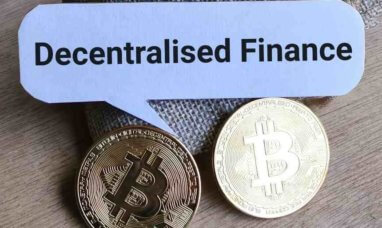What a Reverse Stock Split Means for You
Reverse stock splits sound complicated, however, they are exactly what they sound like. A reverse stock split happens when a publicly-traded company divides the number of shares investors are holding by a certain figure, causing the company’s stock price to increase. This isn’t a fundamental increase, but a technical one due to the change in share price and the number of shares outstanding.
When a company does a reverse stock split, the company changes the number of shares you own and how much each is worth. Let’s say you own 100 shares of a company at $2 per share, worth $200. Reverse stock splits are an exchange; for example, they could be a 1-for-5 deal in which case you would own 20 shares. Now you own fewer shares, and the share price would increase to $10. Your total equity value is the same, but you own less shares at a higher price.
Ultimately, for your portfolio, there is no immediate impact from a reverse stock split.
The company’s market capitalization will not change from a reverse stock split either, making the whole process a simple mathematical change for the company and shareholders. However, although this does not immediately affect your investment, there are some things to note about this process that may affect whether you keep or sell your stocks.
Not all reverse stock splits are a bad sign either. For example, looking at the history of Bemis stock splits, of which there have been four, the share price has continued to rise throughout the company’s history. Citigroup’s reverse stock split in 2011 was also the start of a positive run higher for the stock as the company improved earnings and cash flow while reinstating the dividend.
Why a Reverse Stock Split?
Most companies do a reverse stock split so that they can remain listed on major exchanges. If a stock has been sinking for some time, the company might perform a reverse stock split to quickly boost the price to meet exchange requirements. For example, on the New York Stock Exchange, stocks that close below $1 for 30 consecutive days could be eligible for delisting. If a company does a reverse stock split, this can quickly bump the price up and make it possible for the company to remain listed on the exchange.
Another major reason companies do reverse stock splits is perception. Investors like stocks that are performing well, and although many value investors will look for a good bargain, most will steer clear of losing stocks with extra-low prices. Those prices might be a sign of a struggling or unprofitable company. A reverse stock split changes the initial perception of the company for an investor looking for a higher price as the reverse stock split can increase share prices immediately.
Both of these reasons solve important problems for publicly traded companies, but to some investors they might be signals of a troubled stock.
While these signals might not be comforting at first, the true determiner in whether a reverse stock split is a good thing is the outcome.
If the company uses a reverse stock split that coincides with good news, announcements about new products, or projected earnings, that new higher stock price could become a new low as it continues to climb. Investors would see a big difference in the value of their holdings if this is the case, and could benefit in the long run as a result.
However, if the company uses a reverse stock split, but doesn’t improve operations or make significant changes to fix what might be ailing the company in the first place, the stock could continue to drop. This would likely only pour fuel on to the fire as concerns build about the viability of the company as an investment.
Why Reverse Stock Splits May Be a Signal to Sell
Most analysts agree that a reverse stock split is a signal to sell. A regular stock split is a common signal that a company is doing well, and is a good investment in the long run. On the other hand, a reverse stock split is usually a signal that a company is struggling and needs to boost the stock price temporarily to change perception. However, this does not solve the potential underlying problems for the company, leaving risk in the equation for investors still holding shares.
One study from 2008 conducted on behalf of the Financial Management Association International on reverse stock splits from 1962 to 2001 found that there was a “significant downward price drift and significantly lower earnings and operating cash flows” in the following three years after the reverse stock split. This may be an indicator of a pattern investors should watch out for. Research said that the market often underestimates the extent to which companies will underperform post-split.
When is a Reverse Stock Split Not a Signal to Sell?
While most reverse stock splits are a sign of trouble, there are some exceptions to the rule. Citigroup underwent a 1-for-10 reverse stock split in 2011 while simultaneously reinstating its dividend, bringing shares up to over $40 from around $4 previously. Over the following years, the share price continued to climb and was trading between $70 and $80 before the pandemic of 2020.
In the case of Citigroup, the company had reported four profitable quarters since 2006 by the time 2010 rolled around. This might be construed as a new factor in considering whether you should sell if a reverse stock split is coming. When companies are improving earnings and cash flow with a positive forward guidance and a plan, reverse stock splits may not be a sell signal. However, based on the previously aforementioned study, it is usually more likely a stock will continue to drift lower post-reverse stock split and investors should always keep this in mind.
Timing
If you decide to sell because of a reverse stock split, then the other consideration you must keep in mind is when to sell. When the news breaks of the reverse stock split, or post stock split?
Investors looking to hedge against the downside might want to sell when they first hear the news and get out before the split. But, you should always consider that a reverse stock split could have positive implications for the share price.
A company may decide to enact a reverse stock split if they want to attract investors who require a higher minimum price threshold, have an attractive forward guidance, or want to increase the price of the company to smooth the process of spinning out another company.
Featured Image: Twenty20








